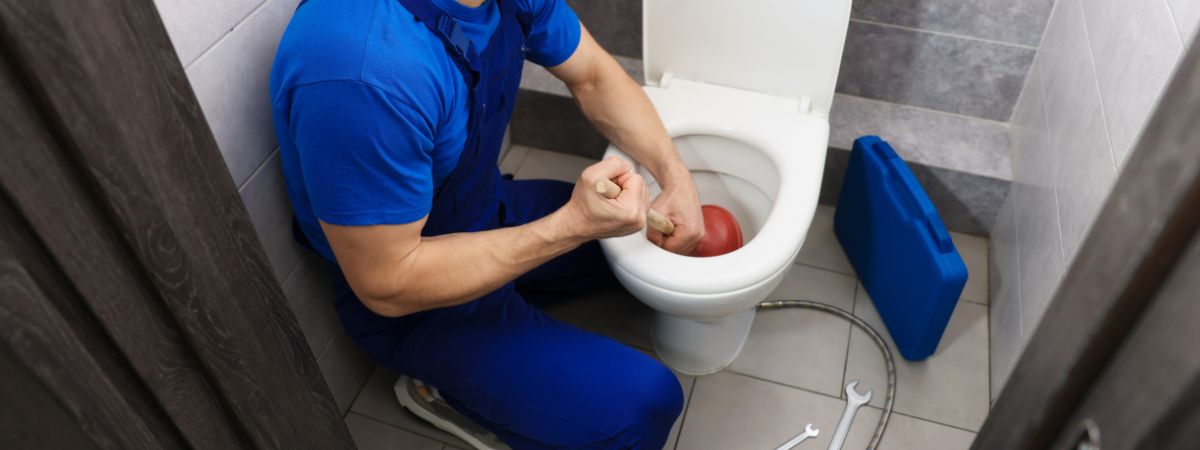Blocked toilets are an inconvenience and bring stress. Many a household in Sydney would rather try their quick and cheap fixes before calling in the plumbers. A fairly common question is whether bleach can help unblock a toilet. Known for its powerful disinfecting and whitening properties, bleach finds its favourite spot in almost every downtown home in Sydney and adjacent areas. It is not designed as a drain cleaner, but it works for occasional minor clogs caused by toilet paper or organic waste.
A weaker block can wear away through a solution of bleach while disinfecting the bowl, helping with drainage and the defeat of unpleasant odours to make the bowl smell nice.
This method of unclogging the toilet using bleach is a fairly simple one and requires a minimum of tools. It can cure small or partial blocks, especially when your plumbing system is old and when clogs are more frequent.
Besides, one must use bleach in moderation, as excessive application could lead to pipe damage or reduce its ability to dissolve better blocks. For stubborn and serious blocks, though, professional plumbers in Sydney constitute the most reliable option. Nevertheless, bleach can be just what one needs for a quick solution to the lighter toilet troubles. Check below for more details on its use to unblock a toilet.
How Can Using Bleach Unblock Toilets?
Bleach is indeed a magical substance that boasts a quick-fix DIY solution for mild clogs. This potent chemical cleaner breaks down organic matter, like toilet paper, waste, or whatever refuse is clogging the pipes. Upon entering the bowls, it acts upon these materials to slim down or loosen them, making it much easier for them to flush away. As the bleach deodorises and disinfects, it will take away odours and bacterial contamination, making the bowl fresher and cleaner.
Pour 2-3 cups of bleach into the toilet bowl and leave this solution to act for some 10-15 minutes. After that, pour a bucket of hot (not boiling!!) water into the toilet to push the clog through the pipes. This does best to heal small or partial blockages as opposed to major ones.
Bleach is for the occasional rescue whenever clogs may occur with the older plumbing systems, coupled with increases in water activity. But it should never replace the use of proper tools for solving a clog, such as a plunger or a professional plumber. Overuse of bleach can cause damage even to pipes if they are part of an aging system, so one should exercise caution when employing this method and take the help of a professional should the clog refuse to move.

What Will You Need For Unblocking Toilets With Bleach?
- Household Bleach: The main cleaning agent. Use 2 or 3 cups of standard liquid bleach, the usual strength that would break down organic matter and disinfect a bowl.
- Rubber Gloves: Invaluable when it comes to protecting the hands from harsh chemicals and germs in the toilet.
- Protective Goggles (Optional): To protect eyes from splashes, especially during the pouring of bleach or hot water.
- Measuring Cup/Jug: To pour the correct quantity of bleach safely into the toilet bowl.
- Bucket of Hot Water: Not boiling, but hot enough, it will create pressure that will give a shove to the blockage through the pipes, now loosened.
- Toilet Brush: For after the process: Scrub the bowl clean and free from any stains.
- Plunger(Secondary Tool): A strong enough force, when the bleach fails to do so, will come in handy.
- Good Ventilation: Open the windows or exhaust fans, as the bleach fume may be loud and unpleasant.
- Old Towels or Rags: To take care of spills or splashes around the toilet area.
These are the basic items that keep the bleach method both practical and safe for minor blockages in the home. You must use them wisely.
Methods Of Using Bleach To Unclog A Toilet
1. Only Bleach
- Into the toilet bowl, pour 2 to 3 cups of household bleach. Leave it there for 10 to 15 minutes; don’t flush it away very quickly. The main purpose of letting it sit is to allow the bleach time to break down toilet paper, gore, and other organic substances.
- After waiting, flush the toilet and see if the blockage has been expelled.
- Set down on minor clogging or slow draining issues with this method, also disinfect the bowl.
2. Bleach and Hot Water
- Pour 2 to 3 cups of bleach into the toilet and let it sit for about 10 minutes.
- Heat a bucket of water (do not boil it; extreme heat can crack the porcelain).
- Pour the hot water slowly into the bowl from waist height; the pressure, together with the chemical action of the bleach, aids in forcing the clog down the pipes.
- Give it a few minutes and then flush to check whether it is draining properly.
- This method is a little more suitable for tougher blockages and also gives an unpleasant odour and a cleaner finish to the toilet.
Remember, bleach is good against light blockages, but if the clog is very hard to get rid of, professional help may be needed.
Conclusion
Unclogging a toilet that is slightly clogged could very well be the quick, cheap, and easy solution somebody says when they want to avoid the cost of a plumber and get the job done fast. Bleach or disinfecting liquid can act as a dissolver of organic matter like tissue paper and human waste, disinfect the bowl, and kill foul smells. Some people usually pour bleach into the toilet along with hot water in the preliminary phase to give a little force to shear away small blockages.
Please, do remember that bleach should never replace plumbing tools and services. It works for light, partial ones, but you need a professional or toilet unblocking solution for a serious clog, which may be because of something that simply is not supposed to be there, or heavy build-ups or issues deep into the pipework. Too much straight use of bleach might harm old plumbing, so only use it sparingly and cautiously.
If the toilet just will not flush even after the use of bleach, then it is best to hire a licensed plumber so as not to aggravate damage and incur costlier repairs. Therefore, bleach can help get you through simple toilet issues at cheap rates while keeping your bathroom smelling pleasant. However, calling a pro is important when the situation does not get fixed in one or two attempts for your peace of mind.


